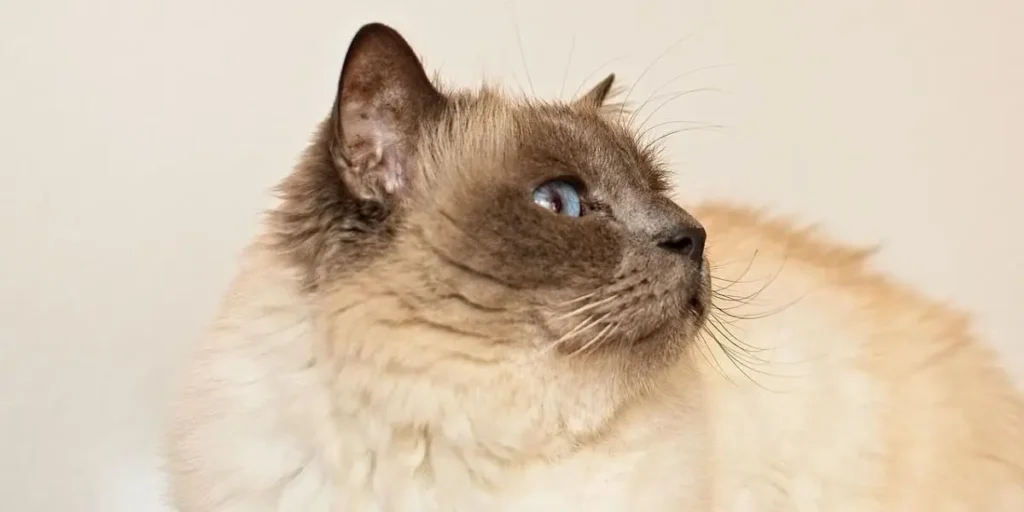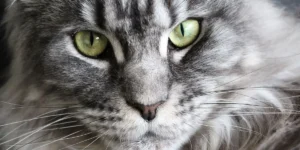Table of contents
History of the Breed
The exact origins of the Birman Sacred Cat remain uncertain. One legend tells that it originated from Burmese temples, where white cats were transformed by the goddess Tsun-Kyan-Kse after a monk’s death, gaining golden fur, blue eyes, and white paws. More realistically, the breed was developed in France during the early 20th century from crosses between Siamese and Persian cats. Nearly extinct after World War II, it was revived from a few surviving cats, notably Orloff and Xena de Kaaba.
Physical Characteristics
- Body: Medium-sized, elongated, and well-muscled with a straight back;
- Coat: Semi-long, silky, soft, shorter on the face and longer on the body;
- Color: Various point colors with mandatory white gloves on each paw;
- Head: Rounded triangle, slightly domed forehead, Roman nose, broad muzzle;
- Eyes: Large, round, and deep blue;
- Ears: Medium-sized, rounded at tips;
- Tail: Medium length, plume-like.
Temperament and Character
The Birman Sacred Cat is calm, affectionate, and loyal. It enjoys human companionship and often follows its owner around the home. Despite its tranquil nature, it remains playful and curious. It gets along well with children and other pets. Though vocal, its meows are soft and melodious.
Living Conditions
The Birman adapts well to indoor living but appreciates safe outdoor access. It thrives in peaceful environments and enjoys observing, relaxing, and playing. While gentle and affectionate, it retains its instinct to explore.
Health
The Birman Sacred Cat is generally healthy but may develop certain genetic conditions:
- Hypertrophic cardiomyopathy (HCM);
- Polycystic kidney disease (PKD);
- Mucopolysaccharidosis type VI.
It can also suffer from urinary issues or weight gain if overfed. Regular veterinary checkups and a balanced diet are essential.
Life Expectancy
With proper care, a Birman Sacred Cat typically lives between 14 and 17 years.
Grooming and Hygiene
The Birman’s coat is easy to maintain. Weekly brushing prevents knots and keeps the fur shiny. During shedding seasons, daily grooming is recommended. Eyes, ears, and teeth require regular care to prevent infections and tartar buildup.
Price and Annual Cost
- Purchase price: $400 to $1,400
- Annual maintenance: $600 to $800
This includes food, veterinary visits, grooming tools, and accessories.
Feeding
The Birman benefits from a diet combining dry kibble and wet food (alternated, not mixed). Kibble promotes dental health, while wet food helps hydration. Birmans are selective eaters – always provide fresh water.
| Origin | France |
| Coat Type | Semi-long, silky |
| Shedding Level | Moderate |
| Temperament | Calm, affectionate, loyal |
| Weight | 4 to 7 kg |
| Life Expectancy | 14 to 17 years |
| Grooming Difficulty | Moderate |
| Price Range | $400–$1,400 |
| Annual Maintenance Cost | $600–$800 |
| Hypoallergenic | No |


